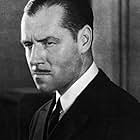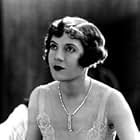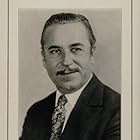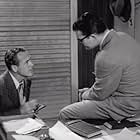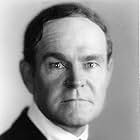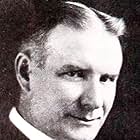"North of 36" tells the story of 600 hundred mile cattle drive through Indian territory from Texas to Kansas. It is by no means a "primitive B Western," as one misguided reviewer calls it. Contrary to his assertion, the problem with this handsome and still impressive film is the script, not the direction.
Like many films based on plot-heavy novels, North of 36 feels like a short digest of long book, with a one-thing-after-another plot stuffed into an 85 minute running time. As the New York Times reviewer noted, the film is low on suspense and surprises. The romance feels rushed and there's very little chemistry between rodent-faced Jack Holt (low on charisma) and Lois Wilson, whose character inherits her father's ranch and leads the cattle drive but doesn't have much agency and is given little to do, aside from pining away for hero. The only actor who comes across is Ernest Torrence, playing an ornery but goodhearted old cowhand who sports a massive salt and pepper beard and steals the show. Noah Beery, who plays the carpetbagging villain, meets a fate that might remind some viewers of a film from the same director, the jaw-dropping "Behind the Door."
Director Irvin Willat said his main task "was to get a good picture out of a poor script. They didn't allow me enough money, and nobody else works that way, so that was another problem." Willat succeeded: this is an ultimately good film that does not look cheap. The staged cattle drive looks as impressive as a real thing, with 4,500 Longhorn cattle (Brahman Bulls, imported from India) swarming the screen. When they ford the Red River, Willat mounts the camera within a floating covered wagon: the shot demonstrates the strength of his camera-eye.
His film is a pleasure to watch, thanks to rich lighting and compositions that showcase the prairies. The reviewer who faults it for not having camera movement fails to realize that (a) there are several traveling shots and (b) Hollywood didn't go ape for moving cameras until "The Last Laugh," which was imported after the making of this film. Willat could afford to go easy on the technique--he was an expert editor who cut his teeth working for Thomas Ince, and the cutting in "North of 36" is economical, precise, and wouldn't seem alien to any modern film-goer.
Despite its flaws, "North of 36" exemplifies many pleasures of silent-era filmmaking, when cameras were mobile, studios were less regimented, and directors went to epic lengths to film epic events.









